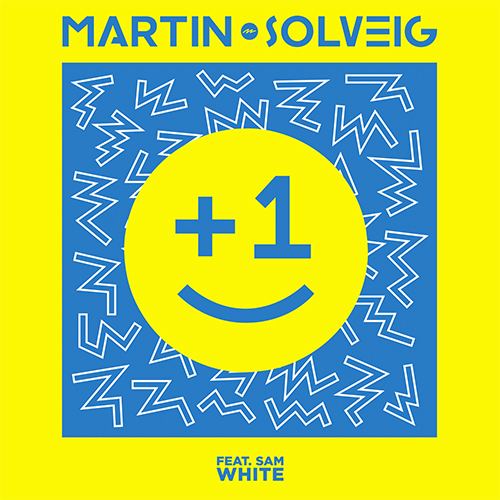-
 play_arrow
play_arrow
Clubalicious Clubalicious Radio
-
 play_arrow
play_arrow
London Calling Podcast Yana Bolder

Kenny Rogers’ recording of the Don Schlitz-penned song “The Gambler” turned a simple record into an entire industry. Aside from the tens of millions of copies the record has sold since its 1978 release, aside from winning a subsequent Song of the Year Grammy and contributing greatly to producer Larry Butler’s also winning the Producer of the Year Grammy (the only country producer ever to win that laurel), the recording spawned five — count ’em, five — made-for-TV movies, as well as the longest-running mini-series in network history, all of which to this day still fill valuable air time on the Lifetime and TNT cable channels. While other Rogers hits, including “Coward of the County” (which also sparked a movie), “We’ve Got Tonight,” “Lady” and the Bee Gees-produced Dolly Parton duet “Islands in the Stream” helped his career span six decades, “The Gambler” became his signature song, bankable enough to have helped Rogers launch his own chicken fast-food chain in the 1980s and his own successful record label, Dreamcatcher, in the 1990s. The track also helped establish the template for country crossover hits in the modern era, just before the Urban Cowboy phenomenon was about to put country in the mainstream once again; instead of the lush, string-laden records made by Chet Atkins and Owen Bradley, which crossed over for artists such as Eddie Arnold, “The Gambler” was a groove record: No solos, few licks, but a slight gloss that made it work for pop radio formats. The record’s endurance speaks for itself: With the re-release of the cut on Rogers’ Dreamcatcher label, sales now exceed 35 million units globally.
When Rogers walked into Jack Clement Recording’s Studio B to record “The Gambler,” the 40-year-old Houston native was already a music industry veteran. He had scored hits as a member of the First Edition and the New Christy Minstrels, as well as solo hits such as the 1977 release “Lucille.” In fact, every album he released between 1976 and 1984 would go Gold or Platinum — amazing for a country artist in those days. Rogers’ career was boosted considerably by his collaboration with producer and United Artists Records executive Larry Butler, a piano player whose ability to walk the line between country and pop in the wake of the Urban Cowboy phenomenon would lead him to make future hit records with artists including Mac Davis, John Denver, B.J. Thomas and Kim Carnes. Butler had pressed U.A. to sign Rogers, and had to point out a clause in his own contract with the record label that allowed him to do so unilaterally after U.A.’s label head expressed a concern that Rogers was over the hill.
The studio — now called Sound Emporium — had plenty of history and would make more. Clement would eventually sell it to Butler and publishers Bob Montgomery and Al Mifflin, who, in turn, sold it to recording artist Roy Clark, who later sold it to current owner and producer Garth Fundis. But that summer evening in 1978, Studio B was still a small L-shaped tracking room with a control room fitted with a Quad 8 console and an Ampex MM-1000 16-track deck. JBL 4320 monitors were soffited above the console.
“I wish I still had that console,” muses Billy Sherrill, the engineer on “The Gambler,” and on most of Rogers’ Nashville hits, including “Lucille.” (Billy Sherrill, the engineer quoted here, spells his name exactly the same as Billy Sherrill, the producer for George Jones and Tammy Wynette’s classic hits — and the subject of this issue’s “Mix Interview” — and the two have worked together many times over the years, much to everyone’s confusion and their own amusement.) Sherrill had recorded quite a few hits with Larry Butler in this studio, including John Denver’s “Some Days are Diamonds.” “We liked the sound of the room,” he says. “It had a nice, tight sound that often worked better for tracking than the larger room in Studio A. What we’d often do is transfer the tracks to the 24-track Ampex deck in A and do our overdubs and mixing in there. But on ‘The Gambler,’ there were very few overdubs and we stayed in Studio B until it came time to mix.”
Classic Tracks: John Fogerty’s “Centerfield”
The song had been around for a while. Don Schlitz had made his own recording of it on an independent country label and it had gotten some local airplay. “It was one of those songs that everyone just knew was going to be a hit,” says Sherrill. “Fortunately, it had ‘Kenny Rogers’ written all over it. It was the perfect story-song for Kenny to work with.” It also meant that most of the musicians on the session were already familiar with it. That gave them a bit more time (on a session when three other songs were to be cut) to come up with a few signature figures for the record, such as the opening acoustic guitar parts played by Ray Edenton and Jimmy Capps in tandem and mixed in stereo. The acoustic guitars were, in fact, critical to the track’s success, says Sherrill. “They were the glue on what was really a rhythm record. They were the rhythm; maybe more so than the drums. They’re the frame for the recording that allow the vocals to tell the story. What really made this record work so well is how simple it was — very few fills and no solos. Just the story.”
The fills were played by Pete Drake on pedal steel and Billy Sanford on electric guitar. They and the other players on the session — Jerry Carrigan on drums, Hargus “Pig” Robbins on piano, Bob Moore on acoustic bass and Tommy Allsup on the “tic-tac” (baritone) bass guitar — were clustered together in the small room. “The studio had an upside-down ‘L’ shape when you viewed it from the control room,” recalls Sherrill. “The bass and piano were up against the far wall; Kenny’s microphone was set up at the other end on the left, and the electric and steel guitars were across from him. The drums were set up in the alcove of the ‘L,’ and The Jordanaires [singing group] were standing by the piano. Just about everything on that record went down live. We had absolutely no baffles in that studio. The sound was great, but I did have to do something to isolate the acoustic guitars because so much of the drums were leaking into them. So I took a couple of Sony CM-50 lavalier microphones and attached them to the acoustics, and that gave me the isolation I needed.” Moore’s acoustic bass was miked with a Neumann U87, which Sherrill says he alternated with an RCA 77DX, depending upon who was playing the stand-up bass. “The 87 on an acoustic bass is incredibly fat-sounding,” he says.
Rogers stood in front of another U87, which Sherrill had come to rely on for the singer, and which the engineer ran through the Quad 8’s onboard mic pre and a UREI LA-2A compressor right to the Scotch/3M tape. “It really picks up his nuances and the growl in his voice,” he explains. “In this case, we did wind up re-doing Kenny’s lead vocal. But most times, everything on the basic track wound up on the record, including his vocals. ‘Lucille’ was like that. He was one of those guys who could give you a perfect take the first time.”
The vocal was re-cut the next afternoon, and on the one remaining open track of the 16-track deck — the drums took four tracks, the acoustics were in stereo, the steel and electric guitar had one track each, one track each for the basses, the piano was in stereo, and three tracks of vocals, including a double of The Jordanaires parts — Rogers, Butler and recording artist Dottie West, who was working in the next studio at the time (but who is not listed on the album credits), sang the choruses again. Rogers also added the “answer” lyrics to the chorus at that time, again using the U87.
The additional vocals were used subtly but effectively in building the record’s texture. “In the first chorus, you really hear that [overdubbed] background vocal track, and you can really hear Dottie in there,” says Sherrill. “But by the time we got to the end choruses, we had brought The Jordanaires up a lot more. It was a way to build the track without compromising the groove it had or interfering with Kenny’s delivery of the story.”
The mix was done in Studio A after the tracks had been transferred to the 24-track deck (though no additional recording was done on the extra 8-tracks). “We went in knowing we wanted a groove record and all the parts were right there, so the mix went pretty quickly,” Sherrill remembers. The mix was done to Scotch ¼-inch tape running at 30 ips/no Dolby. Signal processing was minimal — any vocal compression had been applied during tracking — but Sherrill did take advantage of Studio A’s large, live chambers built on to the back of the building. “They still sound great today, and they were better than the mono spring reverbs that Quad made that were in Studio B.”
Sherrill didn’t apply any additional compression to the stereo mix; country radio stations at the time were mostly AM, and there was plenty of broadcast compression already built-in. Though there were a few small overdubbed percussion hits hidden on various tracks that necessitated an extra pair of hands for manual muting while Sherrill rode the faders in those pre-automation days, the mixdown for “The Gambler” was about as straightforward as its recording had been, with only one version kept — the one that’s been on scores of compilation and greatest hits albums ever since. Mastering was done at Master Control in Nashville by Bob Sowell, the first mastering engineer at Woodland Studios.
As with “Lucille,” Sherrill and Butler were both somewhat surprised when “The Gambler” went to the Top 20 on the pop charts, though less so when it hit Number One on the country charts. “I’d like to think we started something with that record,” says Sherrill, “that we set the tone for crossovers to come. Kenny had been a pop star before; [country] was already his second career. But he still wanted to be a pop singer. You could hear it in his voice. He always had the growl in there that wasn’t really country. One time he asked Larry, ‘You think I’m growling too much on this song?’ and Larry says back to him, ‘Kenny, if you’re not growling, we’re not making money.’”
This article was first posted in July 2002.
Written by: Admin
Similar posts
Recent Comments
No comments to show.Featured post

Latest posts
Current show

Stardust
Bergwall
Bergwall, and you can set automatic carousels of Podcasts, Articles and Charts by simply choosing a category. Every Saturday, from 5 pm till late – STARDUST gonna be LIVE! Bergwall be throwin' down some Funky House, Disco House, French House, Jackin' House, and all them groovy vibes. Slide into the chat, hit that follow button to get updated on every new stream, and let's get funky together.
closeUpcoming shows

Norwegian Dance Chart
Top 40 Hottest Tracks in Norway
09:00 - 11:00
Fresh Is Fresh
THIS WEEKS HOTTEST DANCE RELEASES FROM DEE JAY PROMOTIONS
11:00 - 16:00
Future Disco
Carley Foxx
16:00 - 17:00
Finnish Dance Chart
Top 40 Hottest Dance Tracks In Finland
17:00 - 19:00
Femme House
Lp giobbi
19:00 - 20:00Chart












